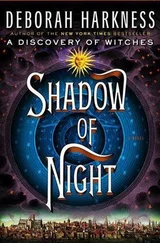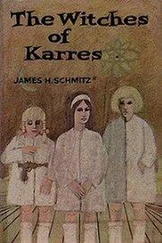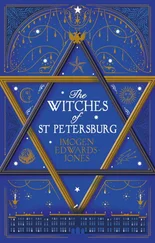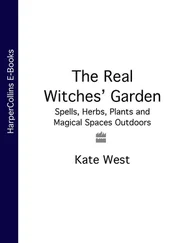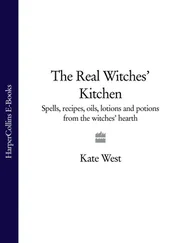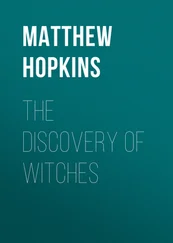“Modern witches aren’t as powerful as their ancestors were.” Miriam’s voice was matter-of-fact. “And you don’t produce as many children as in times past.”
“That doesn’t sound like evidence—it sounds like a subjective assessment,” I said.
“You want to see the evidence?” Miriam picked up two more file folders and tossed them across the gleaming surface so that they slid into my arms. “There it is—though I doubt you’ll understand much of it.”
One had a purple-edged label with “Benvenguda” typed neatly on it. The other had a red-edged label, bearing the name “Good, Beatrice.” The folders contained nothing but graphs. Those on top were hoop-shaped and brilliantly colored. Underneath, more graphs showed black and gray bars marching across white paper.
“That’s not fair,” Marcus protested. “No historian could read those.”
“These are DNA sequences,” I said, pointing to the black-and-white images. “But what are the colored graphs?”
Matthew rested his elbows on the table next to me. “They’re also genetic test results,” he said, drawing the hoop-covered page closer. “These tell us about the mitochondrial DNA of a woman named Benvenguda, which she inherited from her mother, and her mother’s mother, and every female ancestor before her. They tell us the story of her matrilineage.”
“What about her father’s genetic legacy?”
Matthew picked up the black-and-white DNA results. “Benvenguda’s human father is here, in her nuclear DNA—her genome—along with her mother, who was a witch.” He returned to the multicolored hoops. “But the mitochondrial DNA, outside the cell’s nucleus, records only her maternal ancestry.”
“Why are you studying both her genome and her mitochondrial DNA?” I had heard of the genome, but mitochondrial DNA was new territory for me.
“Your nuclear DNA tells us about you as a unique individual—how the genetic legacy of your mother and father recombined to create you. It’s the mixture of your father’s genes and your mother’s genes that gave you blue eyes, blond hair, and freckles. Mitochondrial DNA can help us to understand the history of a whole species.”
“That means the origin and evolution of the species is recorded in every one of us,” I said slowly. “It’s in our blood and every cell in our body.”
Matthew nodded. “But every origin story tells another tale—not of beginnings but of endings.”
“We’re back to Darwin,” I said, frowning. “Origin wasn’t entirely about where different species came from. It was about natural selection and species extinction, too.”
“Some would say Origin was mostly about extinction,” Marcus agreed, rolling up to the other side of the lab bench.
I looked at Benvenguda’s brilliant hoops. “Who was she?”
“A very powerful witch,” Miriam said, “who lived in Brittany in the seventh century. She was a marvel in an age that produced many marvels. Beatrice Good is one of her last-known direct descendants.”
“Did Beatrice Good’s family come from Salem?” I whispered, touching her folder. There had been Goods living there alongside the Bishops and Proctors.
“Beatrice’s lineage includes Sarah and Dorothy Good of Salem,” Matthew said, confirming my hunch. He opened Beatrice’s file folder and put her mitochondrial test results next to those of Benvenguda.
“But they’re different,” I said. You could see it in the colors and the way they were arranged.
“Not so different,” Matthew corrected me. “Beatrice’s nuclear DNA has fewer markers common among witches. This indicates that her ancestors, as the centuries passed, relied less and less on magic and witchcraft as they struggled to survive. Those changing needs began to force mutations in her DNA—mutations that pushed the magic aside.” His message sounded perfectly scientific, but it was meant for me.
“Beatrice’s ancestors pushed their magic aside, and that will eventually destroy the family?”
“It’s not entirely the witches’ fault. Nature is to blame, too.” Matthew’s eyes were sad. “It seems that witches, like vampires, have also felt the pressures of surviving in a world that is increasingly human. Daemons, too. They exhibit less genius—which was how we used to distinguish them from the human population—and more madness.”
“The humans aren’t dying out?” I asked.
“Yes and no,” Matthew said. “We think that the humans have—until now—proved better at adapting. Their immune systems are more responsive, and they have a stronger urge to reproduce than either vampires or witches. Once the world was divided more evenly between humans and creatures. Now humans are in the majority and creatures make up only ten percent of the world’s population.”
“The world was a different place when there were as many creatures as humans.” Miriam sounded regretful that the genetic deck was no longer stacked in our favor. “But their sensitive immune systems are going to get humans in the end.”
“How different are we—the creatures—from humans?”
“Considerably, at least on the genetic level. We appear similar, but under the surface our chromosomal makeup is distinctive.” Matthew sketched a diagram on the outside of Beatrice Good’s folder. “Humans have twenty-three chromosomal pairs in every cell nucleus, each arranged in long code sequences. Vampires and witches have twenty-four chromosome pairs.”
“More than humans, pinot noir grapes, or pigs.” Marcus winked.
“What about daemons?”
“They have the same number of chromosome pairs as humans—but they also have a single extra chromosome. As far as we can tell, it’s their extra chromosome that makes them daemonic,” Matthew replied, “and prone to instability.”
While I was studying his pencil sketch, a piece of hair fell into my eyes. I pushed at it impatiently. “What’s in the extra chromosomes?” It was as hard for me to keep up with Matthew now as it had been managing to pass college biology.
“Genetic material that distinguishes us from humans,” Matthew said, “as well as material that regulates cell function or is what scientists call ‘junk DNA.’”
“It’s not junk, though,” Marcus said. “All that genetic material has to be left over from previous selection, or it’s waiting to be used in the next evolutionary change. We just don’t know what its purpose is—yet.”
“Wait a minute,” I interjected. “Witches and daemons are born. I was born with an extra pair of chromosomes, and your friend Hamish was born with a single extra chromosome. But vampires aren’t born—you’re made, from human DNA. Where do you acquire an extra chromosome pair?”
“When a human is reborn a vampire, the maker first removes all the human’s blood, which causes organ failure. Before death can occur, the maker gives his or her blood to the one being reborn,” replied Matthew. “As far as we can tell, the influx of a vampire’s blood forces spontaneous genetic mutations in every cell of the body.”
Matthew had used the term “reborn” last night, but I’d never heard the word “maker” in connection with vampires before.
“The maker’s blood floods the reborn’s system, carrying new genetic information with it,” Miriam said. “Something similar happens with human blood transfusions. But a vampire’s blood causes hundreds of modifications in the DNA.”
“We started looking in the genome for evidence of such explosive change,” Matthew explained. “We found it—mutations proving that all new vampires went through a spontaneous adaptation to survive when they absorbed their makers’ blood. That’s what prompts the development of an extra chromosome pair.”
“A genetic big bang. You’re like a galaxy born from a dying star. In a few moments, your genes transform you into something else—something inhuman.” I looked at Matthew in wonder.
Читать дальше

